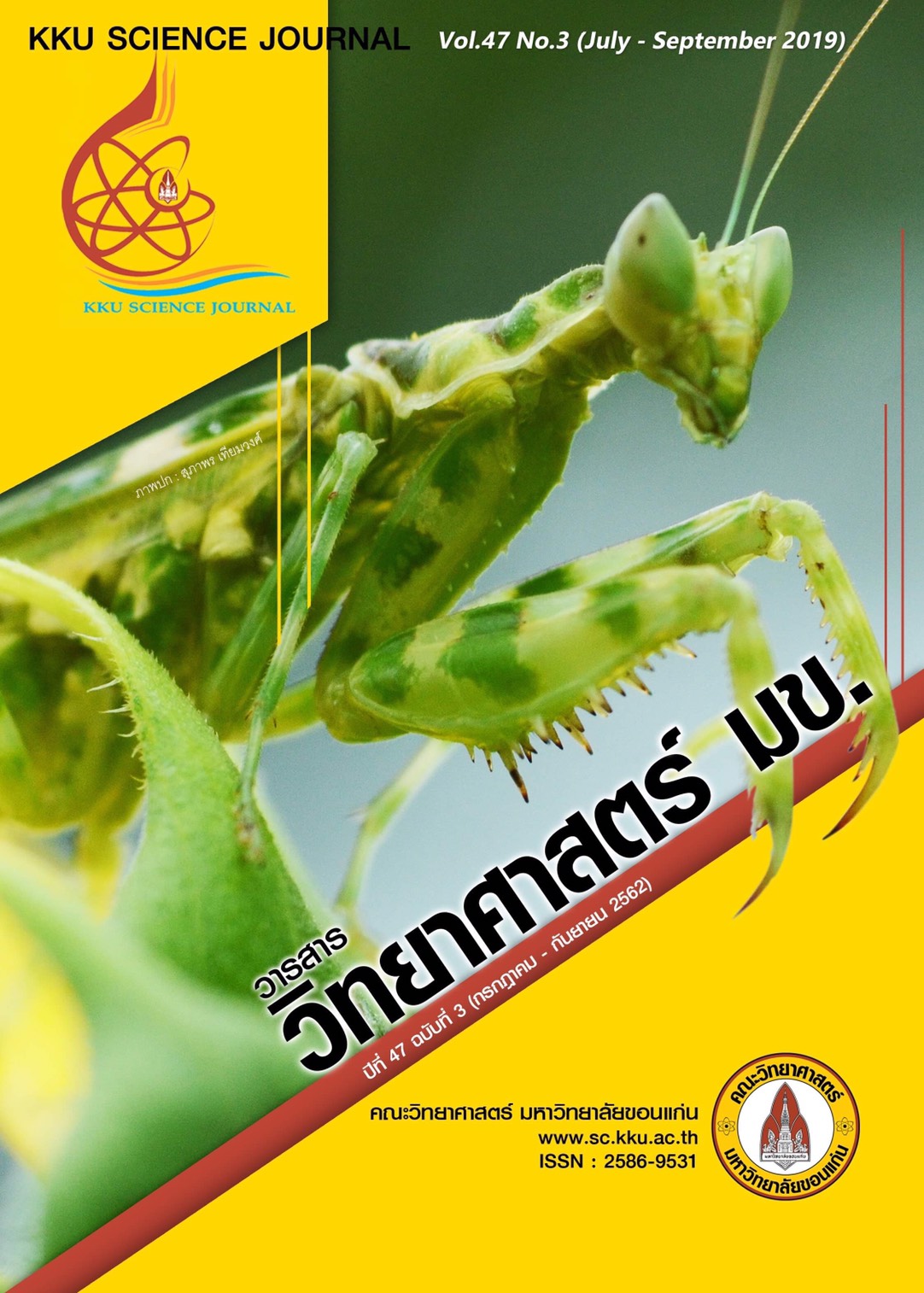Kinetic study and pyrolysis of palm kernel shell (PKS) and palm empty fruit bunches (EFB) for bio-oil production
Main Article Content
Abstract
This research investigated the chemical composition, thermal behavior and kinetics of the pyrolysis process of palm kernel shell (PKS) and palm empty fruit bunches (EFB), which are the wastes from the oil palm industries. The chemical composition of bio-oil produced by pyrolysis process with the fixed bed reactor was also studied. The result showed that PKS had higher content of volatile matter, carbon content and calorific value; while, it had lower oxygen content and ash content than those of EFB. The thermal behavior obtained from TGA at heating rate of 20 °C/min showed that there were three steps of thermal degradation of both PKS and EFB. The first step involved the moisture evaporation and thermal degradation of main decompositions (cellulose, hemicellulose and lignin) was in the second step. The last step was the slow decomposition of carbonaceous material. The activation energies of both sample were analyzed by Flynn-Wall-Ozawa (FWO) and Kissinger-Akahira-Sunose (KAS) method presented in the same range (232-237 kJ/mol) without difference between two methods. Bio-oil produced from the pyrolysis process at 500 °C was analyzed by GC/MS. These bio-oil consisted of aromatic, aliphatic, fatty acid, oxygenated and nitrogenated compounds. The fatty acids were the main compound found in bio-oil from EFB; while, aromatic hydrocarbons were the major product in bio-oil from PKS. Therefore, PKS and EFB have potential for energy application and the pyrolysis oil is considered as a chemical source and can be upgraded to commercial fuels.
Article Details

This work is licensed under a Creative Commons Attribution-NonCommercial-NoDerivatives 4.0 International License.


